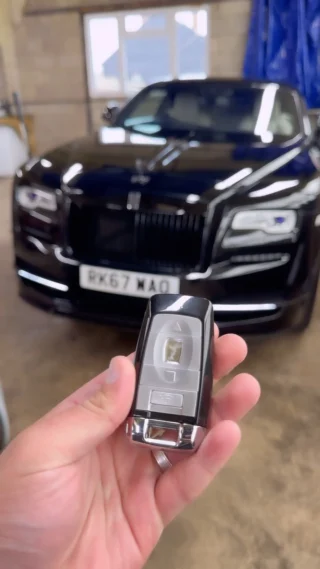Understanding Car Key Transponder Programming
In today's automotive landscape, the integration of advanced innovation has actually ended up being synonymous with vehicle security. One of the most significant advancements in this location is the intro of transponder keys. Car key transponder programming is a vital procedure that ensures vehicles are secure from unauthorized access while supplying benefit to owners. This article explores what transponder keys are, how they work, the programming procedure, and responses to some frequently asked questions.
What is a Transponder Key?
A transponder key is a kind of ignition key which contains a little ingrained microchip. This chip interacts with the vehicle's immobilizer system. Transponder keys are developed to improve vehicle security by preventing hot-wiring and unapproved engine begins.
Key Features of Transponder Keys:
- Embedded Microchip: Each key includes a special code that corresponds to the vehicle's ignition system.
- Immobilizer System: This system acknowledges the key's distinct code and permits the engine to begin just if the appropriate key is utilized.
- Boosted Security: Transponder keys are substantially harder to duplicate than conventional keys, minimizing the threat of theft.
How Transponder Keys Work
Transponder keys run on a straightforward concept of radio frequency recognition (RFID). When the key is inserted into the ignition or brought near the vehicle, the following series takes place:
- Signal Transmission: The vehicle's ignition system sends out a radio signal to the transponder key.
- Code Response: The ingrained chip in the key gets this signal, activates, and sends out back its distinct code.
- Confirmation: The vehicle's computer system verifies the received code. If it matches the stored code, the engine will begin; if not, the engine remains immobilized.
Benefits of Transponder Technology:
- Improved theft prevention.
- Benefit of keyless vehicle starting (in some systems).
- Lowered expenses associated to insurance premiums due to improved security procedures.
The Car Key Transponder Programming Process
Programming a car key transponder is an important step that allows a brand-new key to interact with the vehicle's immobilizer system. The procedure can differ based on the make and design of the car but typically includes the following steps:
Steps Involved in Transponder Key Programming:
- Obtain a New Transponder Key: Owners must first obtain a blank transponder key compatible with their vehicle.
- Gain Access To the OBD-II Port: For modern lorries, programming typically needs an On-Board Diagnostics (OBD-II) scanner that connects to the OBD-II port.
- Switch on the Ignition: The ignition needs to be turned to the "On" position without starting the engine. This enables the system to recognize that a brand-new key is to be programmed.
- Follow Programming Procedure: Depending on the vehicle, follow the particular programming actions offered by the producer, generally outlined in the owner's handbook. This might involve pressing particular buttons in a particular order.
- Evaluate the Key: After programming, it's necessary to evaluate the key by trying to start the engine. If effective, the key is properly set.
Tips for Successful Programming:
- Consult an expert locksmith or dealership for complex programming procedures.
- Guarantee battery levels in the key fob and vehicle suffice.
- Follow the guidelines carefully to avoid mistakes.
Common Issues with Transponder Key Programming
In spite of the relatively uncomplicated process, numerous issues may develop throughout programming. Below are some common challenges:
- Key Compatibility: Using an incompatible key can cause programming failures.
- Faulty Equipment: A malfunctioning OBD-II scanner may prevent access to the programming menu.
- Weak Key Batteries: Insufficient power in the key fob can disrupt interaction.
Often Asked Questions (FAQs)
1. Can I set my transponder key myself?
While lots of lorries permit DIY programming, some designs need customized devices or software application. If uncertain, it's finest to speak with a professional locksmith or your vehicle dealership.
2. What if I lose my transponder key?
If a transponder key is lost, it's a good idea to call a certified automotive locksmith or your car dealership for a replacement. duplicate car keys can configure a new key based upon your vehicle's VIN (Vehicle Identification Number).
3. How much does it cost to set a transponder key?
The cost differs extensively, depending upon the vehicle make and model, and whether you pick to go through a dealer or a locksmith. ignition key repair from ₤ 50 to ₤ 150.
4. What takes place if my transponder key quiting working?
If your transponder key quiting working suddenly, it might be due to a dead battery or problems with the vehicle's immobilizer system. It's advised to have both the key and the vehicle examined by a professional.
5. How often should I replace transponder key batteries?
Transponder key batteries should be changed every 2 to 3 years, though this can vary based upon usage. Indications of a passing away battery include difficulty beginning the vehicle or the key fob not operating at all.
Car key transponder programming is an important process for modern-day vehicle security and benefit. Comprehending how transponder keys function and how they are configured can empower vehicle owners to handle their vehicle security effectively. As innovation continues to evolve, remaining notified about these developments will assist owners secure their properties and ensure their automobiles operate smoothly.
Summary Table: Key Features of Transponder Keys
| Function | Description |
|---|---|
| Embedded Microchip | Contains a special code for vehicle recognition |
| Immobilizer System | Prevents unauthorized engine starts |
| Enhanced Security | Challenging to duplicate compared to conventional keys |
With developments in innovation, the significance of understanding and efficiently managing car key transponder systems can not be overemphasized. Enhanced vehicle security not just protects your financial investment but likewise makes sure assurance on the roadways.

